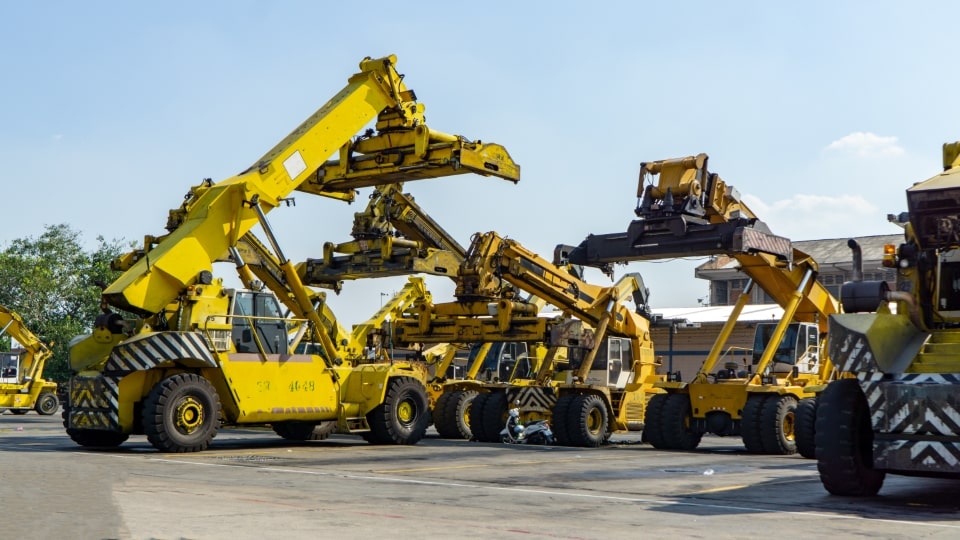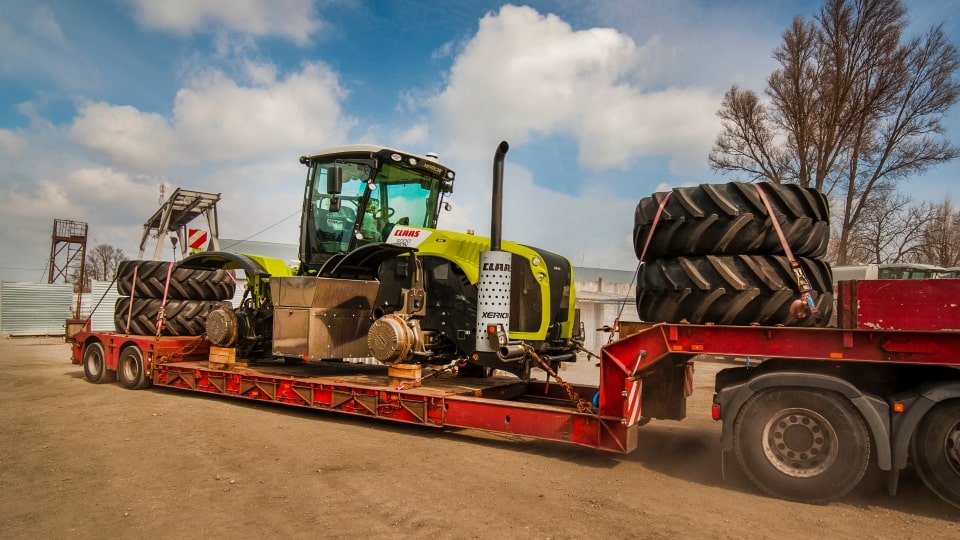Understanding Construction Equipment Moves: Quick Guide

Efficiently managing the logistics of construction equipment transport and heavy machinery shipping, including heavy duty shipping boxes, requires expert knowledge and strategic planning. This guide explores critical strategies to enhance the safety and efficiency of transporting large-scale machinery and heavy cargo. From innovative route optimization to the meticulous acquisition of necessary permits, and the careful selection of appropriate transport methods like flatbeds and heavy haulers, we ensure your valuable equipment and cargo reach their destination reliably.
Strategic Route Planning: Maximizing Efficiency and Safety

Optimal route planning is vital for transporting heavy machinery and heavy duty shipping boxes. Using advanced mapping technologies ensures that routes are safe and efficient, avoiding potential logistical hurdles. Dynamic routing technology that adjusts to real-time traffic and weather conditions can significantly reduce travel time and fuel consumption, thereby lowering overall transport costs.
Understanding Permit Acquisitions
The complexity of moving construction equipment and oversized shipping boxes across various jurisdictions means navigating a labyrinth of regulatory requirements. Proper permit acquisition is essential to avoid fines and delays. Establishing a proactive communication channel with regulatory authorities can streamline the permit process and provide early warnings about changes in regulations that could impact your planned routes.
Selecting the Right Transport Method
Choosing the correct method to transport your construction equipment and heavy duty shipping boxes is crucial for ensuring the safety of the cargo and efficiency of the operation. This choice will depend on the cargo’s dimensions, weight, and specific handling requirements. Sometimes, customizing transport solutions, such as modifying trailers with additional securement points or using specialized handling equipment, can provide better security and adaptability to various types of loads.
Advanced Tracking and Monitoring
Implementing state-of-the-art tracking systems for real-time monitoring of heavy machinery and heavy shipping boxes not only ensures the security of the cargo but also enhances operational efficiency through detailed logistical oversight. Modern tracking technologies can also monitor environmental conditions inside shipping containers or trailers, crucial for cargo that is sensitive to temperature fluctuations or vibrations during transit.
Ensuring Comprehensive Insurance Protection
Robust insurance coverage is indispensable for mitigating the risks associated with transporting expensive construction equipment and heavy duty shipping boxes. This coverage should encompass potential losses from accidents, theft, and environmental hazards. Tailoring insurance policies to the specific risks associated with routes, cargo characteristics, and transport methods can significantly enhance coverage effectiveness, ensuring comprehensive protection against unforeseen events.
Elevate the efficiency and security of your construction equipment transport and heavy machinery shipping needs. We deliver from LA to Vegas and every city in between. Call us now for a free quote, and take advantage of our expertly tailored logistics solutions.
FAQ Section: Addressing Your Top Concerns
What unique challenges do heavy shipping boxes pose during transport?
Heavy shipping boxes often require specialized handling due to their size and weight. Challenges include ensuring stability during transit, preventing moisture ingress, and maintaining structural integrity under dynamic load conditions. Properly assessing and addressing these unique factors is crucial for safe and efficient transport.
How does weather affect the transport of construction equipment and heavy boxes?
Weather conditions such as extreme heat, cold, or precipitation can significantly impact transport logistics. For example, heavy rain can affect load stability, while extreme temperatures might necessitate special insulation techniques to protect the contents of heavy shipping boxes.
Can you explain the importance of route optimization in heavy cargo transport?
Route optimization is vital for minimizing travel time and reducing fuel consumption, which can lead to significant cost savings. Additionally, optimized routes enhance safety by avoiding areas with potential hazards such as low bridges, tight curves, or roads prone to heavy traffic, which are critical considerations when transporting large or heavy items.
What technologies are changing the way heavy equipment is transported?
Technologies such as GPS tracking, IoT devices for monitoring cargo conditions, and automated route planning software are revolutionizing heavy equipment transport. These tools provide real-time data that can help preempt issues on the road and optimize delivery schedules, making the entire process more efficient and less prone to errors.
What steps can be taken to ensure the safety of heavy equipment during transit?
Safety measures include using the correct tie-down techniques to secure equipment on transport vehicles, conducting pre-departure checks to ensure all equipment is stable and secure, and training drivers to handle the specific challenges of transporting heavy loads. Additionally, regular maintenance of transport vehicles is essential to prevent mechanical failures during transit.
How do legal regulations impact the transport of oversized loads?
Legal regulations can vary significantly from one region to another and may affect everything from the size of the load that can legally be transported to the times during which transport can take place. Compliance with these regulations is critical to avoid legal issues and potential fines, and understanding them can also help in planning the most efficient transport strategy.
What are some best practices for reducing costs in heavy equipment transport?
Reducing costs can be achieved by planning efficient routes, choosing the right transportation method, consolidating shipments whenever possible, and maintaining equipment to prevent costly breakdowns. Additionally, investing in training for drivers and logistics staff can lead to more efficient operations and fewer costly mistakes.
Follow us on Instagram for more insights and updates on everything freight @lasvegasexpedited.
